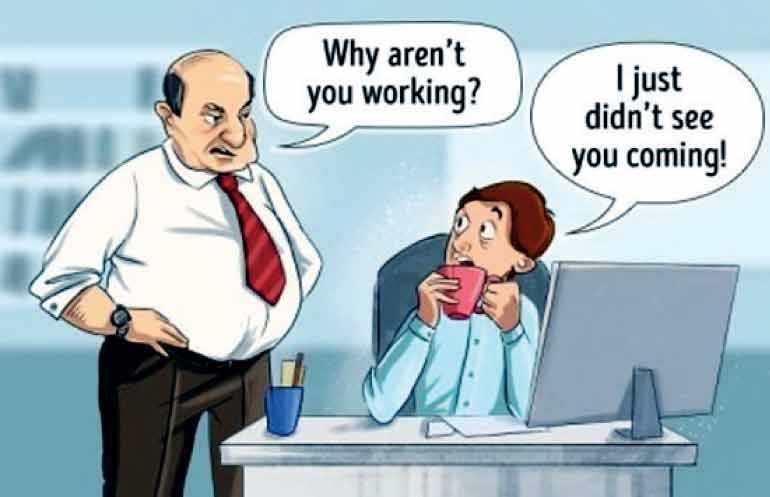Saturday Mar 15, 2025
Saturday Mar 15, 2025
Monday, 10 August 2020 00:00 - - {{hitsCtrl.values.hits}}

“It doesn’t make sense to hire smart people and then tell them what to do. We hire smart people so they can tell us what to do” – Steve Jobs
 People don’t leave bad companies. They leave bad bosses. The worst place an employee can be, is stuck in an organisation with a micro-manager that doesn’t care and there are no opportunities for growth and advancement.
People don’t leave bad companies. They leave bad bosses. The worst place an employee can be, is stuck in an organisation with a micro-manager that doesn’t care and there are no opportunities for growth and advancement.
Employees want meaningful work, and they want autonomy in how they work. No matter how great a company’s products and/or services may be, if management is dysfunctional, that company will have serious problems. The typical ‘bad boss’ spends their time directing employees rather than empowering them. Micromanaging is oppressive, fosters anxiety and creates a high stress work environment. Eventually, employees will become disenchanted and quit to work for another company.
In my early career, I worked for a company that employed scientific management to boost productivity. They put profit above people and sought to gain every ounce of productivity out of employees. We didn’t even stop much to celebrate the teams’ successes. It was about quickly moving along to the next goal. There was no real leadership (vision and inspiration) only management (command and control). The culture was basically do as you are told. Suggestions and recommendations by employees and even results of viewpoint surveys were often ignored. Management didn’t accept negative results. Their analysis of such results centred on whether employees understood the questions which was an insult to our intelligence.
Employees became disengaged and focused solely on their salary. This was the only high point. Most individuals did nothing extra outside of their job specifications. The workload was unfeasible, however at 4:00 pm on the dot, employees could be seen leaving the office, as if there was a fire drill taking place. Team spirit and morale was extremely low. I felt stifled. For highly-driven and ambitious individuals, it can be likened to putting an eagle in a chicken coop and clipping their wings. Thus, I didn’t stay there very long. Employee turnover was high. Many individuals wanted to leave but because of debts or accumulated retirement earnings remained.
Leaders need to know their employees and what motivates them. If you are heading a small organisation and job openings are few and far in between; Make cross training, job rotation and mentoring available and gave employees more responsibility. Assign challenging projects that motivate employees and gave them stretch targets which will cause them to grow. If they have plateaued and there is nothing else to look forward to, they will become disengaged.
Employee engagement soars when it’s a priority and looked upon with purpose and intention. If you want to get the best out of your employees – put people first. Show employees that you care. Treat them well. Reward and recognise their efforts. When you show you want and value employees’ contributions, they become far more engaged in the outcomes. Furthermore, take an interest in their development by giving them responsibility and challenges that will help them to grow. When people feel they are moving forward, adding to their skill base, learning new concepts, and stretching their capabilities, motivation tends to remain high.
Discover Kapruka, the leading online shopping platform in Sri Lanka, where you can conveniently send Gifts and Flowers to your loved ones for any event including Valentine ’s Day. Explore a wide range of popular Shopping Categories on Kapruka, including Toys, Groceries, Electronics, Birthday Cakes, Fruits, Chocolates, Flower Bouquets, Clothing, Watches, Lingerie, Gift Sets and Jewellery. Also if you’re interested in selling with Kapruka, Partner Central by Kapruka is the best solution to start with. Moreover, through Kapruka Global Shop, you can also enjoy the convenience of purchasing products from renowned platforms like Amazon and eBay and have them delivered to Sri Lanka.
Discover Kapruka, the leading online shopping platform in Sri Lanka, where you can conveniently send Gifts and Flowers to your loved ones for any event including Valentine ’s Day. Explore a wide range of popular Shopping Categories on Kapruka, including Toys, Groceries, Electronics, Birthday Cakes, Fruits, Chocolates, Flower Bouquets, Clothing, Watches, Lingerie, Gift Sets and Jewellery. Also if you’re interested in selling with Kapruka, Partner Central by Kapruka is the best solution to start with. Moreover, through Kapruka Global Shop, you can also enjoy the convenience of purchasing products from renowned platforms like Amazon and eBay and have them delivered to Sri Lanka.